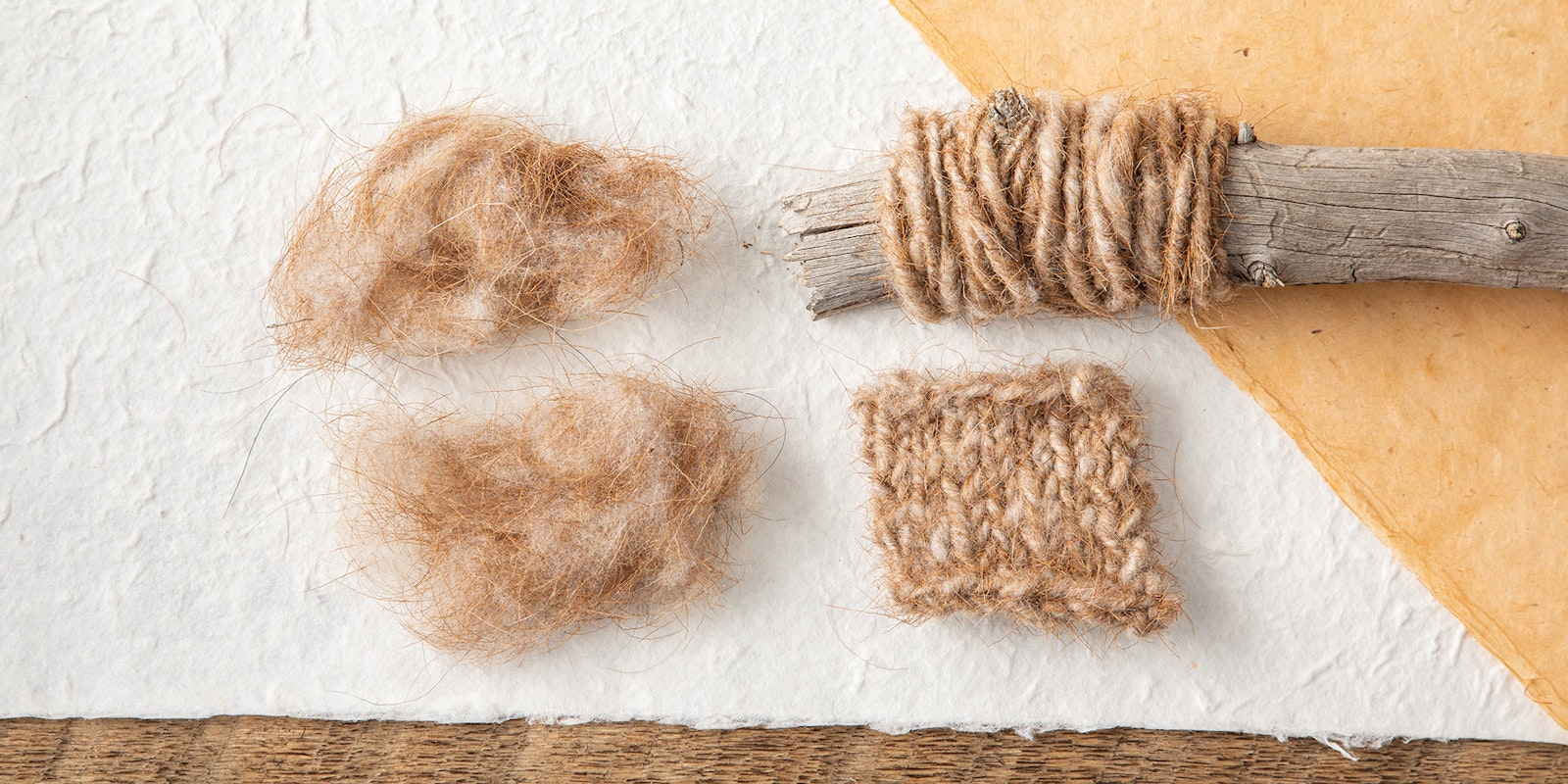“I’m in over my head,” I said aloud as Barbados Blackbelly fleece—a mix of hair and wool—dried on a table on the back deck. When someone says “sheep fleece,” what pops into your mind? Is it a woolly, soft expanse of fiber? Springy to the touch? This was definitely not it. The dark hair and wool stuck out in all directions after washing, and now I needed to try spinning this fiber combination.
Barbados Blackbelly fiber is not an obvious choice for spinning into yarn because it is not a breed meant for yarn. Hair sheep often have fleece characteristics more like the ancestors of domestic sheep, not the fluffy silhouette we associate with today’s domesticated breeds.
I decided to try my hand at working with fiber from this sheep breed because it is part of the Livestock Conservancy’s Shave ’Em to Save ’Em program, which encourages crafters to use fiber from rare breeds. The conservancy explains on its website that the Barbados Blackbelly sheep of today “descend from crosses of African hair sheep and European wooled breeds that were brought to the [Caribbean island of Barbados] beginning in the mid-1600s.” These sheep needed to withstand both heat and humidity and now are “excellent foragers, highly resistant to disease, and can tolerate a higher worm load without requiring chemical intervention.” Raised primarily for food, the sheep needed to survive in a more extreme climate and were not necessarily a source of wool. As a result, modern Barbados Blackbelly sheep (brought to the United States in the early 1900s) retain these characteristics, but that doesn’t mean the wool they do produce is unusable.
On my first attempt at working with this fiber, I used handcards to combine the hair and wool into one fluffy pile and used a drop spindle to create a thick twist of the combined fibers. It worked! The wool held the hair together, and I crafted a rather ungainly stuffed animal for my son.
 Erika made this quick stuffed animal for her son using St. Croix fiber from Hemmer Hill Farm.
Erika made this quick stuffed animal for her son using St. Croix fiber from Hemmer Hill Farm.
The same preparation and spinning method worked for the next hair breed I tried: St. Croix. Similar to the Barbados Blackbelly, the St. Croix line developed on its namesake Caribbean island from a combination of hair sheep from West Africa as well as woolly breeds from Europe. Like the Barbados variety, they shed and don’t need to be sheared—which is helpful in the heat—and historically, their manure provided nutrients to local sugarcane fields.
Unlike the Barbados Blackbelly, my batch of St. Croix fiber was made up almost exclusively of hair in a bright white hue. Still, the singles yarn held together with few breaks for another stuffed animal.
I wanted another crack at making Barbados Blackbelly yarn and ordered more fiber. This time, I carefully separated out the thickest clumps of hair before spinning. I didn’t remove all the hair because it provided an interesting contrasting color and texture. Hair breeds may be challenging to spin, but the skeins they produce are unique in both feel and texture.
Is spinning fiber from hair breeds into yarn easy? No. Do I recommend it? Absolutely! Spinning brings us closer to human history, to our ancestors who originally domesticated the sheep and created a proliferation of breeds suited for specific environments. At the very least, spinning hair breeds gives a peek into the mindset of those who sought to make cloth from the fiber of these multicolored ungulates. As for me, I have an order of Wiltshire Horn—another hair breed—arriving this spring, and I can’t wait.
Interested in learning more about adding texture to your spinning? This article and others can be found in the Spin Off Summer 2022 issue.
Also, remember that if you are an active subscriber to Spin Off magazine, you have unlimited access to previous issues, including Summer 2022. See our help center for the step-by-step process on how to access them.
ERIKA ZAMBELLO is an environmental communications specialist living and working in north Florida. She is a strong proponent of spinning and knitting outside, working on her projects while walking, hiking, and exploring. Follow her adventures on Instagram @knittingzdaily.

